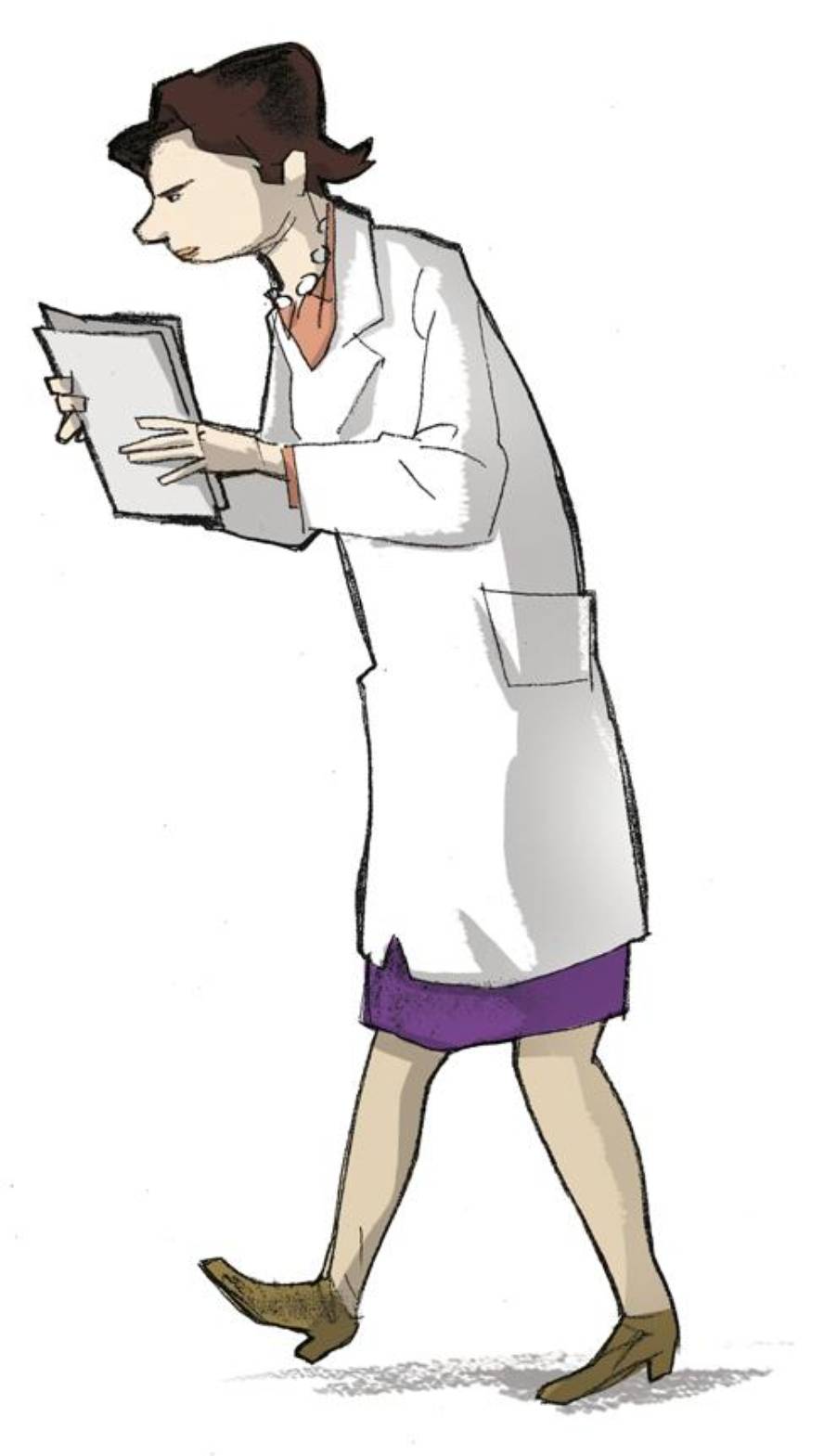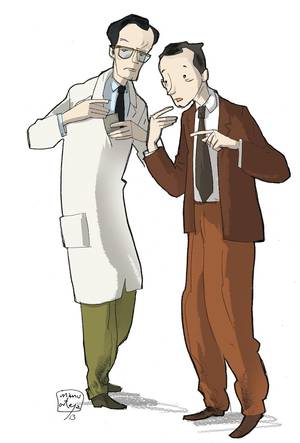The propeller is double
In March 1953, Rosalind Franklin had prepared an article on the structure of DNA. But then he discovered that Watson and Crick proposed a new model of DNA structure. Watson and Crick's article was persecuted by Franklin, in Nature, on April 25, 1953. He had to write a note: "Our main ideas coincide with the model that Watson and Crick propose in the previous article." And it was not surprising that it coincided, although Franklin did not know, because the model of Watson and Crick was based on his data.
"Rosy, of course, did not give us his data. King'sen no one knew that these data were in our hands," Watson would later write. And it would also recognize that without making use of Franklin's work, it would not be possible to clarify the structure of DNA. Franklin did not know that Cambridge rivals used his data, not even that some of them were treated by Maurice Wilkins of his team.
Wilkins and Franklin never repaired well. Before arriving at Franklin King's College, Wilkins worked with DNA alongside his doctoral student Raymond Gosling. He arrived in Franklin in 1951. He studied physics and chemistry, did not know anything about biology, but was a specialist in crystallography by X-ray diffraction. The director wanted this technique to be applied to DNA, even more, he told Franklin to direct DNA research and that from then on Gosling would be with him. But Wilkins said nothing to him. He felt excluded. The relationship between Wilkins and Franklin did not start very well. And their nature also collided. Franklin had a demanding look, an intense tongue and little patience. Wilkins, for his part, was shy, slow in speech and avoided looking into the eyes.
The work of Franklin and Gosling began to bear fruit. They soon saw that DNA could have two forms, depending on the degree of hydration, calling them A and B. And it looked like the B had propeller shape. Franklin exposed these results in a conference. In that talk was the young Watson.
James Watson and Francis Crick were researchers at the Cavendish laboratory in Cambridge. They worked with theoretical models and needed external data to produce their own models. And what Watson heard at the Franklin conference was interesting. He told Crick, not very correctly. And with this erroneous information they thought it would not be difficult to imagine the structure of DNA. They did it right away and, proud, invited the King's to see their structure. Nothing else to see her realized that Franklin and Gosling were wrong. It was a triple helix with groups of phosphates inside. This was impossible, this structure left no room for water molecules. The phosphate groups had to be on the outside of the propeller.
Franklin completely eliminated the Cambridge model, reason by reason, rigor. Crick, as he will later say, was the only time he saw Watson without words.
King's continued forward. Franklin worked a lot on improving and tuning the X-ray diffraction machine and began to get exceptional images. The images clearly showed that the B was shaped like a propeller, but in the case of the A it was not so clear. And Franklin had not published anything until he was clear what was to be published; theorization and speculation did not like, he needed data. Thus, together with Gosling, he made complex mathematical calculations from those images. At the end of 1952, Franklin collected these results in an internal report.
Franklin concluded that the two forms of DNA were propeller, they were double propellers, the propellers formed by two chains. He lacked to understand how the two chains joined. It was close, very close. But those of Cambridge went faster. By then they already had the data of Franklin.
The first key information was obtained in January 1953. Watson went to Franklin stirring in hand the draft of an article by the American Linus Pauling. It also referred to the structure of DNA, wrong: three chains and phosphates inside. However, Watson was serious, Pauling was not any, he had discovered the structure of proteins and was certainly very capable of finding that of DNA. Before Pauling realized the error, Watson proposed to work together. But he told Franklin that he was not able to interpret his data. And he was very angry. Wilkins appeared in the middle of the debate and led Watson to his office. Then Franklin taught him the best image of the DNA removed, photo 51. Watson immediately saw what this image meant: It was a double propeller! They returned to Cambridge, told Crick and soon began to work.
On January 28, Franklin gave a lecture at King's. The talk, driven by the bad work environment, was to show the comrades their work. Watson and Crick also wanted to go, but Wilkins wrote to them saying they were not going because it was private. "We will speak later when the air is cleaner. I hope that the smoke of the witch will soon disappear before our eyes," he wrote.
They did not attend the conference, but in mid-February, through Crick's thesis director, Franklin got that internal report of results. That information and photo 51 were a chollo for Watson and Crick. By the end of February Crick threw in a bar that found the "secret of life."
The model was available on March 7, 1953. And it was correct. Watson was able to clarify what was missing from Franklin. The key was in the work of the Austrian Erwin Chargaff. Chargaff discovered that the four bases that formed the DNA were always equal in two. And Watson realized that it was because they matched by pairs, always formed concrete couples and through them joined the two chains of the propeller.
Franklin welcomed with dignity the discovery of Watson and Crick. He died five years later, in 1958, at age 37, for ovarian cancer. Watson, Crick and Wilkins did not see the Novel he received in 1962.







